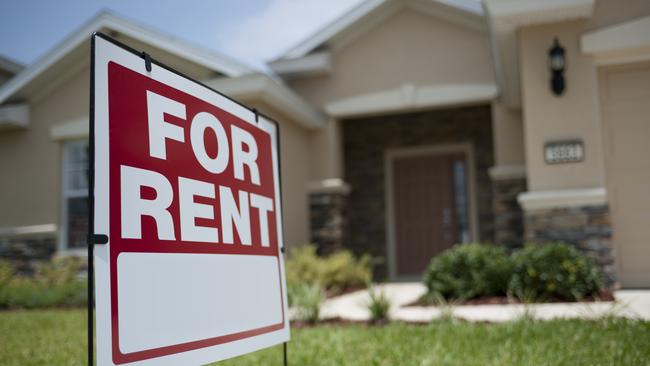Being a landlord shouldn’t be this hard
Property investors need less of the stick and more of the carrot if we are to avoid the biggest national housing crisis in our history.

This situation was all too predictable, according to those in the know. When governments intervene, unintended consequences come back to bite. It is just a shame that the decision-makers seem to escape unscathed.
Melbourne has a vacancy rate of 4.6 per cent, with Sydney’s at 2.9 per cent. However, in Perth it is 0.7 per cent. The Real Estate Institute of WA says there is more than 50 per cent fewer properties to rent than this time a year ago and rents are predicted to rise by up to 15 per cent next month when the COVID-induced rent moratorium ends.
In Adelaide, the vacancy rate is 0.6 per cent. In Canberra it is 0.9 per cent and in Darwin it is 0.8 per cent. In Brisbane it is 1.6 per cent but across Queensland it is less than 1 per cent. In Tasmania, Hobart has a vacancy rate of 0.4 per cent and the situation is so dire that locals are pleading in the media for people to stop moving there from the mainland.
Rising house prices in our smaller cities and regions are making headlines, too. However, “the single biggest story for Australian real estate for these next few years will be fast-rising rents”, according to Simon Pressley, head of research firm and buyers agency Propertyology.
Pressley says while about 40 per cent of the population live in Sydney and Melbourne, the other 60 per cent live elsewhere. In these locations, the extreme upward pressure on rents is forming the “biggest national housing crisis in our history”.
In December 2016, for all areas combined outside Melbourne and Sydney, there were 61,980 advertised rental properties to choose from. Yet last December there were only 20,653 dwellings for renters in “60 per cent of the nation’s population” to compete for.
The situation points to a series of decisions made from May 2015. Policy settings were altered in response to a much publicised property boom in Sydney and Melbourne.
While this boom was ongoing, many other Australian markets were suffering, but “a broadbrush approach” was taken to discourage property investment.
Pressley says that what the Australian Prudential Regulation Authority needs to realise is that “investing is a discretionary action”. People cannot be forced into becoming landlords — “those who do it, do it because they are motivated to be financially independent in later life”.
There is a dire need for housing for the rental market, but “the collective actions of stakeholders discourage investment at the moment”.
As it stands, residential property investment, especially in the regions, is unappealing to many. It can be bothersome and time consuming. The monetary benefits of negative gearing are often overstated but in reality they are negligible. The disincentives to invest are understated but high.
Investors pay about an extra 1 per cent in loan interest than an owner occupier. The loan serviceability is assessed on stricter criteria and most local councils charge higher rates for rental properties. State governments can impose stricter requirements on landlords. Insurance companies, too, seem to put premiums up as much as possible at every opportunity.
Pressley points out that 98 per cent of our rental supply is funded by about 2.2 million private individuals. Governments, for all their meddling, don’t step up to provide rental property in any meaningful way and probably never will.
The federal government knows there is a problem. Last year it announced that unreasonably tight credit policies were to be loosened. However, it needs to go further. Property owners and landlords need to be supported meaningfully, and wider measures are needed.
Responsible borrowing must be the benchmark, but it has to be efficient, cost effective, and timely. It beggars belief that loan application processes that took a couple of days 30 years ago now take many weeks.
Premium interest rates, too, should not be charged. Parity is essential, and states must stop charging investors higher stamp duty and ease off on the restrictions on what an owner can do with their asset. City councils must stop charging investors a premium on rates as well.
Pressley recommends an investigation into the conduct of insurance companies. “From charging excessive insurance premiums to hiding behind fine print when a policyholder makes a claim, rorting of real estate products is a national problem.”
In the interest of disclosure, I am not a landlord but have been in the past. Been there, done that, bought the T-shirt, and if you ask me it is all too hard. Nevertheless, we need more landlords because we don’t have enough dwellings for rent. Investors need less of the stick and more of the carrot.
As for the current price boom, as Pressley says: “Don’t play god with markets, let them sort themselves out.” Here is hoping that everyone, including APRA, has learnt their lessons.



Who can ignore the news reports of regional working families living in tents and caravans? If we take our two major cities out of the equation, the residential rental market is tight.